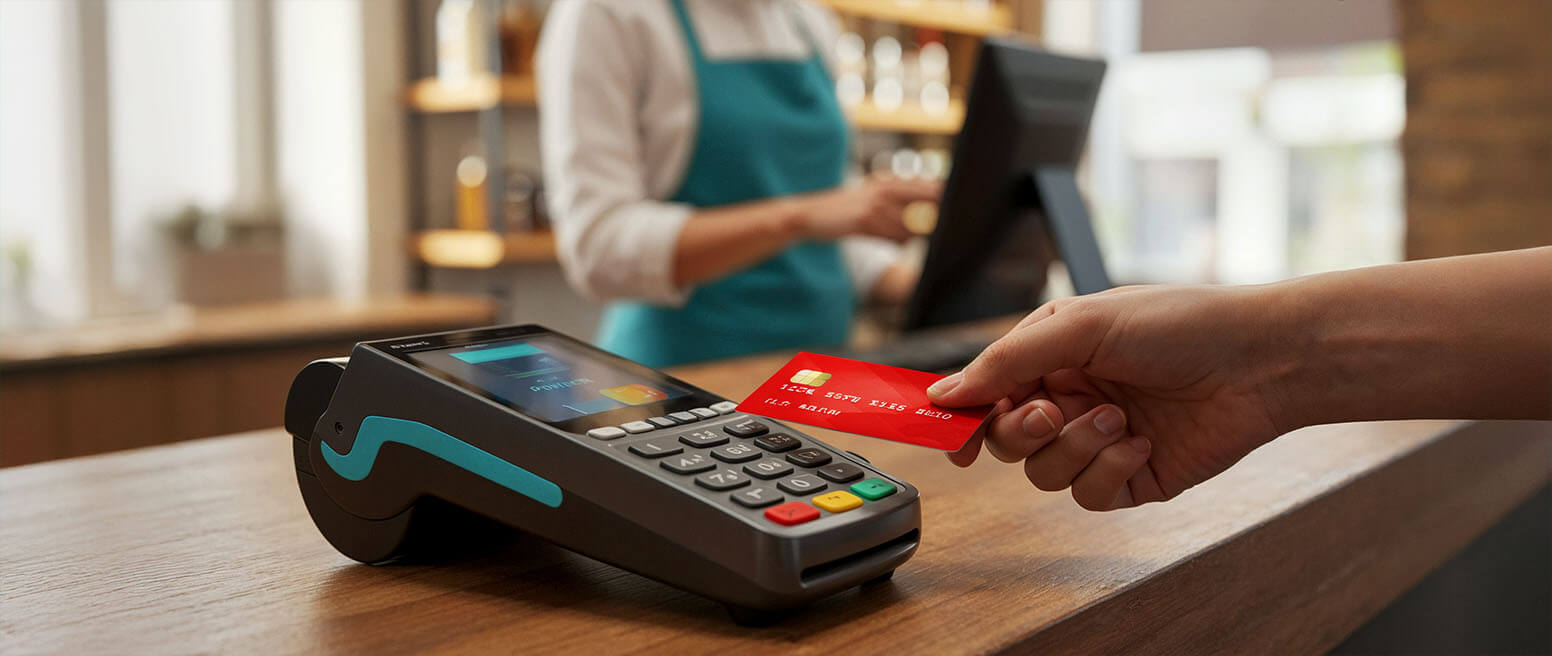Real-Time Payments (RTPs): Why Do They Matter for eCommerce?
This article has been published in collaboration with our good friends over at Bankful, one of the world’s premier providers for intelligent processing and gateway services.
Gone are the days when merchants had to wait days for transactions to clear. Real-time payments (RTPs) are changing the waiting game, offering instant and secure payment processing.
But, what does this mean for eCommerce businesses, especially those in high-risk industries? How do RTPs compare to traditional payment methods like ACH? And most importantly, how can merchants leverage RTPs to improve cash flow, reduce fraud, and enhance customer satisfaction?
Let’s break it all down.
Recommended reading
- What is EMV Bypass Cloning? Are Chip Cards Still Secure?
- Dispute Apple Pay Transaction: How Does The Process Work?
- Terminal ID Number (TID): What is it? What Does it Do?
- How EMV Chip Cards Work: Pros, Cons, Data Points & More
- The AI Gap: Banks’ Slow Adoption Creates Chances for Fraud
- Point of Sale Systems: How to Get More From Your POS Machine
What Are Real-Time Payments?
- Real-Time Payments
Real-time payments (RTPs) are financial transactions that are processed instantly, providing immediate transfer of funds between parties. These payments are executed securely and efficiently, eliminating the delays of traditional payment methods.
[noun]/rēəl • tīm • pā • mənts/
Real-time payments are transactions that clear and settle instantly. This process can be done 24/7, eliminating the delays associated with traditional banking processes.
Unlike conventional payment methods that require batching or waiting periods, RTPs provide immediate access to funds. For eCommerce businesses, this means faster cash flow, reduced payment disputes, and an overall smoother customer experience.
For merchants operating in high-risk industries like CBD, nutraceuticals, and adult products, speed and security in transactions are crucial. RTPs offer a way to reduce exposure to fraud for businesses that are in highly regulated industries who were often subject to chargebacks and fraudulent payments.
How Do Real-Time Payments Work?
When a payment is initiated, the funds are immediately transferred from the payer's bank account to the recipient's account. The payment bypasses a lot of the delays associated with traditional payment methods like ACH transfers or checks.
All parties involved can trust the accuracy and speed of the transaction because advanced technology and secure communication protocols facilitate the payment. And, both the sender and receiver are notified in real-time, providing extra transparency.
Real-Time Payments vs. Conventional ACH Payments: A Breakdown
While ACH payments have been a staple for businesses, they come with inherent delays and risks:
Merchants stand to gain several advantages from adopting real-time payments:
- 24/7 Availability: Real-time payments can be made and received any time, including weekends and holidays. This flexibility and can help with urgent or time-sensitive transactions.
- Faster Access to Funds: Eliminating wait times allows businesses to reinvest in inventory, marketing, and growth strategies more quickly.
- Reduced Chargebacks: Since RTP transactions are instant and final, the risk of fraudulent disputes is significantly lower compared to traditional payment methods.
- Enhanced Security: Real-time verification and processing reduce exposure to common fraud tactics, ensuring merchants are protected.
- Better Customer Experience: Instant payments mean fewer delays in order fulfillment, leading to increased customer satisfaction and loyalty.
| Payment Method | Speed (Settlement Time) |
| Real-Time Payments (RTP) | Instantaneous, 24/7 |
| ACH (Automated Clearing House) | 1-3 business days (Same-day ACH available) |
| Wire Transfers | Same-day (domestic), 1-5 days (international) |
| Credit Card Settlements | Varies, can be 1-3 days |
Where Are RTPs Available Today?
Real-time payments are rapidly expanding across the globe.
In the United States, The Clearing House's RTP Network and the Federal Reserve’s FedNow initiative are leading the charge in making instant payments more accessible. Several banks and financial institutions are integrating RTP capabilities, with adoption expected to rise in the coming years.
Internationally, countries like the UK, India, and Australia have already embraced RTPs, demonstrating their effectiveness in streamlining financial transactions. The EU has the Single Euro Payments Area (SEPA), for example, while other countries and regions have their own individual RTP networks.
As more regulatory frameworks develop, businesses worldwide will have increased access to these high-speed payment solutions.
Real-time Payments Networks by Region
North America
- Canada: Real-Time Rail
- Mexico: Sistema de Pagos Electrónicos Interbancarios (SPEI)
- United States: FedNow Service, RTP
South America:
- Argentina: Transferencia
- Brazil: Pix
- Colombia: Sistema de Pagos Inmediatos (SPI)
Europe
- EU: SEPA Instant Credit Transfer (SCT Inst)
- Russia: Faster Payments System (SBP)
- United Kingdom: Faster Payment System (FPS)
Africa
- Egypt: Instant Payment Network (IPN)
- Ethiopia: EATS
- Ghana: GhIPSS Instant Pay (GIP)
- Kenya: PesaLink
- Nigeria: NIBSS Instant Payment (NIP) system
Asia-Pacific
- Australia: New Payment Platform (NPP)
- Bahrain: Fawri+
- China: Internet Banking Payment System (IBPS), High Value Payment System (HVPS)
- India: Immediate Payment Service (IMPS), Unified Payments Interface (UPI)
- Japan: Zengin System
- Jordan: Cliq
- Singapore: PayNow
The Future of RTPs: What’s Coming Next?
There are already numerous use cases for real-time payments. Some examples include:
Use Cases for Real-Time Payments
- Person-to-Person (P2P) Transfers: Quickly send money to friends or family members, whether splitting a bill or providing financial assistance.
- Merchant Payments: Enable instant payments for goods and services at retail or online stores.
- Bill Payments: Pay utility bills or other recurring expenses instantly to avoid late fees.
- Payroll Disbursements: Employers can use RTP to pay employees immediately, providing faster access to earned wages.
- Insurance Claims: Expedite claim payouts directly to policyholders for faster resolution.
- eCommerce Refunds: Provide customers with immediate refunds for canceled orders or returns.
- Loan Disbursements: Facilitate quick access to approved loan funds for borrowers.
- Emergency Payments: Support urgent financial needs in cases like medical emergencies or disaster relief.
But, the next decade will see an even greater push toward RTP adoption. Key trends to watch include:
- Broader Bank & Fintech Adoption: More financial institutions will integrate RTP capabilities into their services.
- Growth in High-Risk Industries: Sectors like cannabis, supplements, and adult products will particularly benefit from secure, instant transactions.
- Integration with Emerging Technologies: Artificial intelligence and blockchain will further enhance RTP security and fraud prevention.
As infrastructure improves and regulatory barriers ease, RTPs will become the standard for online payments, shaping the future of eCommerce transactions.
Fraud Detection in the RTP Era: Challenges & Opportunities
With the rise of real-time payments, fraud detection must evolve. Because RTPs are instant and irrevocable, businesses must adopt more advanced fraud prevention strategies.
At the Banking Level
Financial institutions will need AI-powered monitoring to detect suspicious transactions in real-time before funds are transferred.
At the Merchant Level
Businesses will need to implement stricter identity verification, multi-factor authentication, and AI-driven fraud prevention tools to minimize risks.
Non-card payments, such as real-time payments (RTPs) or bank transfers, are not subject to chargebacks because they involve direct fund transfers between parties, eliminating the intermediate dispute resolution process managed by card networks.
Unlike credit or debit card transactions, which allow consumers to file disputes through their issuing bank, non-card payment methods operate on systems where the transaction is considered final once authorized and processed. This lack of chargeback capability stems from the underlying payment infrastructure. RTPs are designed to prioritize speed and direct control over funds rather than providing a mechanism for reversing payments post-completion.
But, while RTPs remove the risk of chargebacks, they require merchants to be proactive in securing transactions against fraudsters exploiting instant processing speeds.
As a leading payment processor for high-risk industries, Bankful is at the forefront of secure, fast, and reliable payment solutions. By integrating real-time payment capabilities, Bankful helps merchants:
- Reduce payment delays and improve cash flow.
- Minimize fraud risks with cutting-edge security features.
- Scale their business with seamless, instant transactions.
RTPs: The Way Forward for the Payments Industry?
Whether you're looking to enhance payment processing speed or fortify your business against fraud, real-time payments offer a transformative solution.
Being prepared to adapt to real-time payment solutions is not just an advantage; it's a necessity for a fast-paced, digital economy. By leveraging these innovative solutions, merchants can not only enhance their transaction processes but also build trust with their customers and stay ahead in competitive markets.
FAQs
What is a real-time payment system?
A real-time payment system is a digital platform that allows the instant transfer of funds between bank accounts, ensuring transactions are completed in seconds. These systems operate 24/7, providing immediate confirmation and accessibility for both businesses and consumers.
What is RTP vs ACH?
RTP (real-time payments) and ACH (automated clearing house) are both methods of transferring funds, but they differ significantly in speed and functionality. While RTP enables instant, real-time transactions 24/7, ACH typically processes payments in batches, often taking one to three business days to complete.
Is Zelle considered a real-time payment?
Yes, Zelle is considered a real-time payment system as it allows users to send and receive money instantly between participating banks. However, the actual speed of the transaction may depend on whether both banks involved support real-time transfers through Zelle.
Which banks are using RTP?
Several major banks in the United States are utilizing the RTP network, including JPMorgan Chase, Bank of America, Wells Fargo, and Citi. Additionally, numerous regional and community banks have adopted RTP to offer faster and more efficient payment solutions to their customers.
Is there a fee for real-time payments?
There is generally no fee for receiving real-time payments; however, some banks may charge a small fee for sending them. It is recommended to check with your bank to confirm any associated costs for RTP services.
What is the maximum amount for real time payments?
The maximum amount for real-time payments can vary depending on the financial institution and their policies. However, the clearing house currently sets the default transaction limit for RTP at $1,000,000, though individual banks may enforce lower limits.











